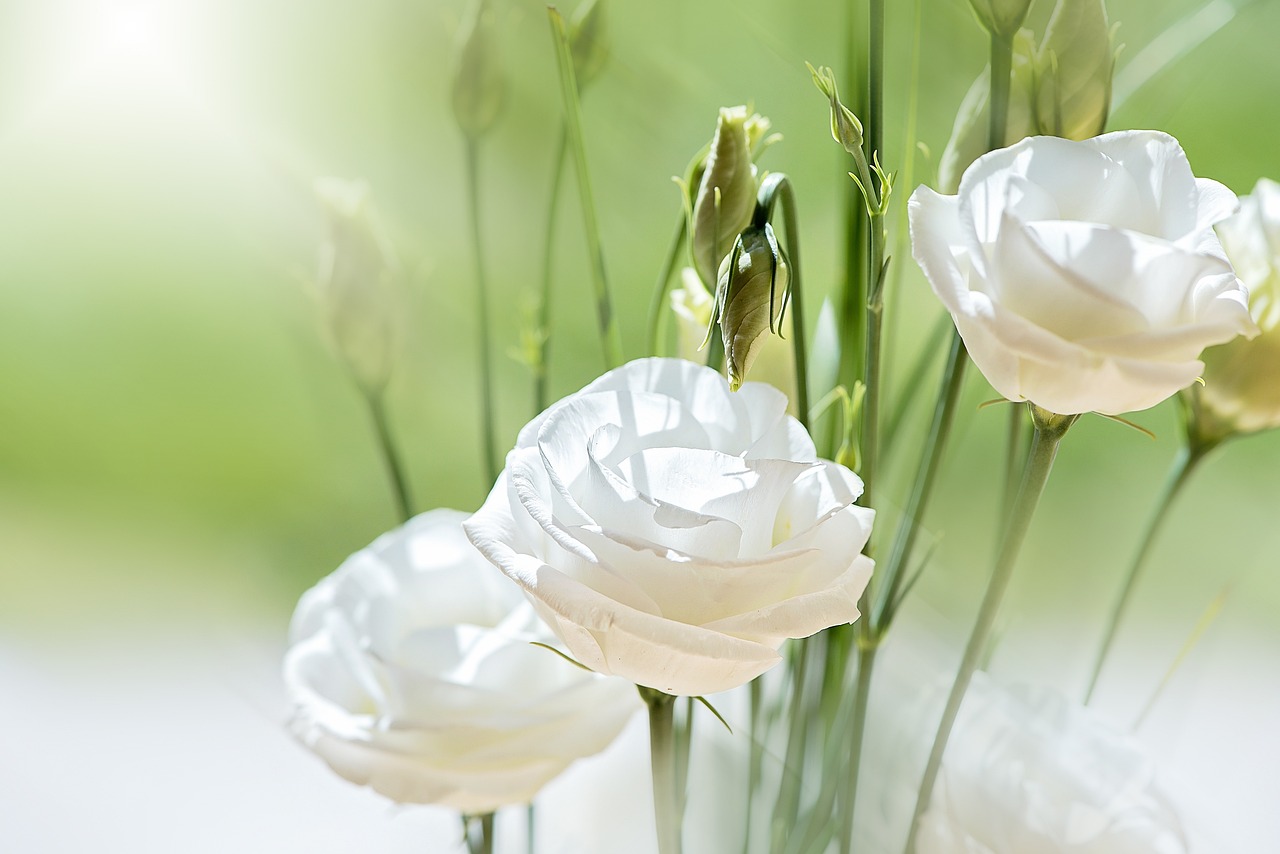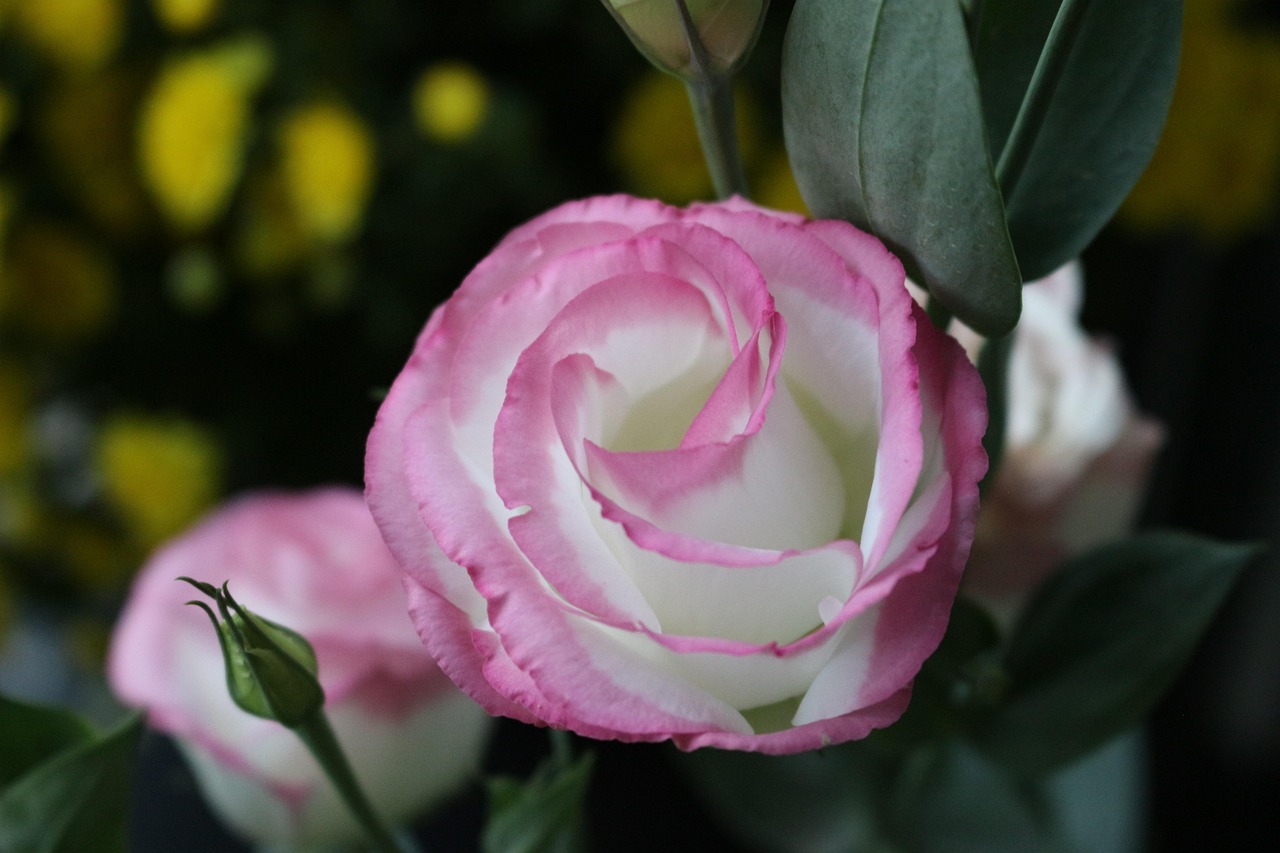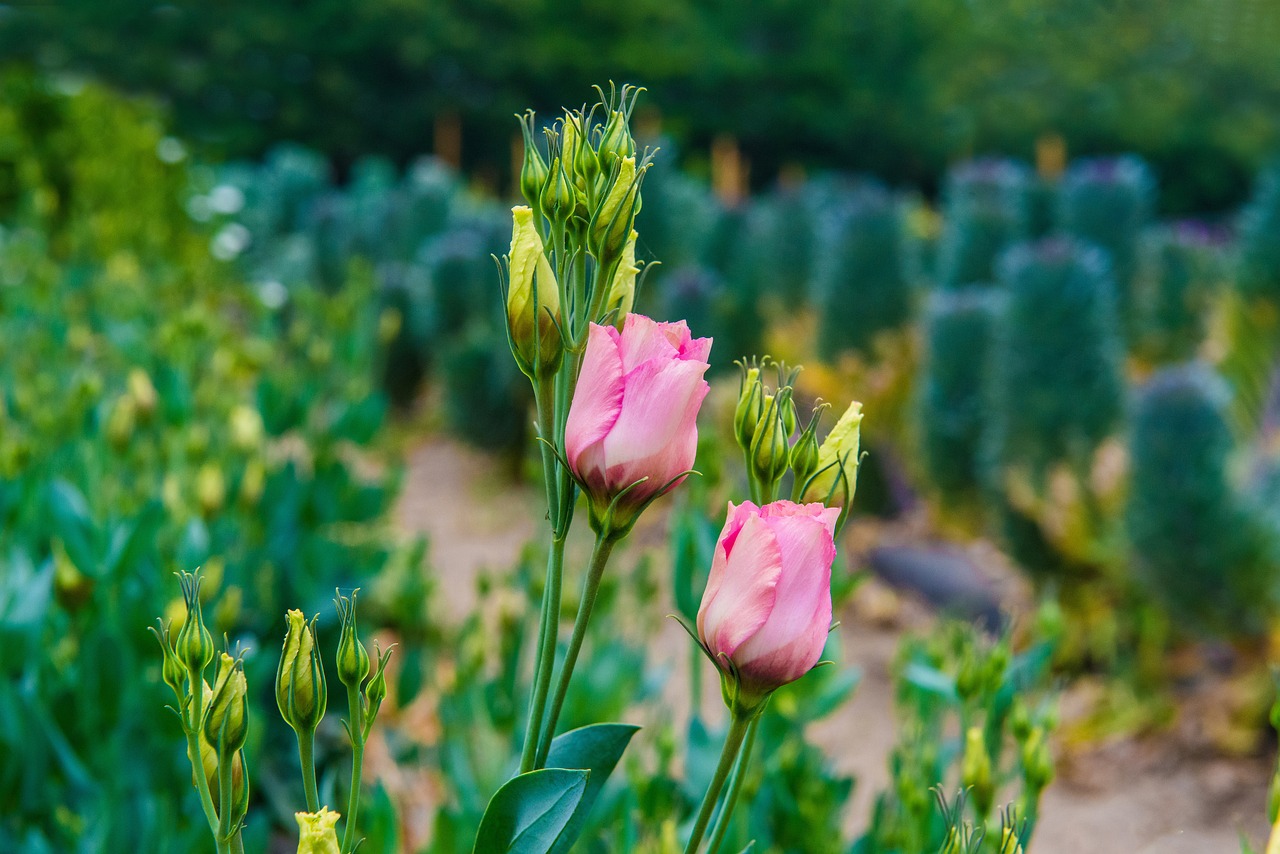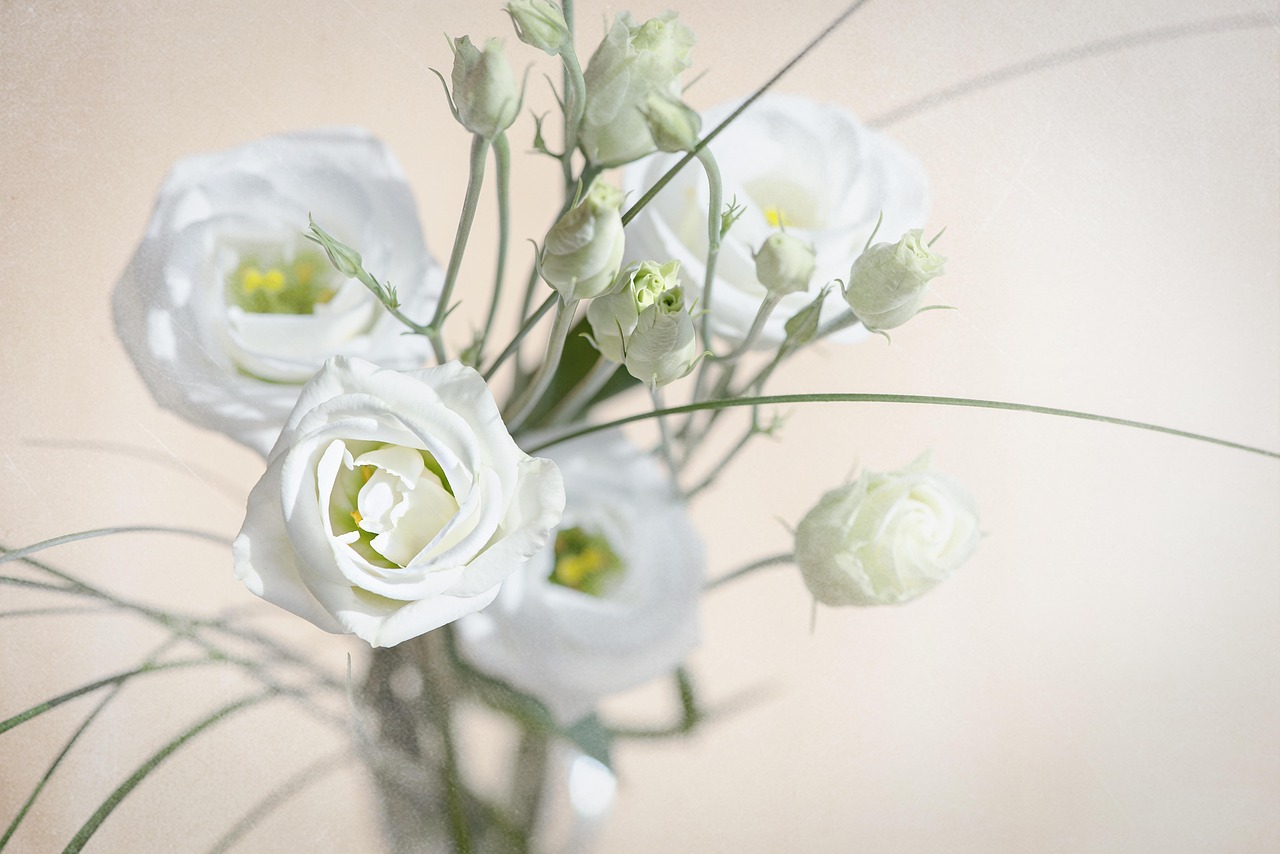Lisianthus, with their beautiful, rose-like blooms, are a favorite among gardeners. These stunning flowers not only enhance gardens but also make excellent cut flowers. Growing lisianthus can be rewarding if you understand their needs and care requirements.
Known scientifically as Eustoma grandiflorum, lisianthus is a member of the gentian family. They are originally native to the Southern United States and Mexico. With their delicate petals and vibrant colors, they have gained popularity in floral arrangements worldwide.

Lisianthus flowers are often mistaken for roses due to their layered petal structure and rich colors. They come in various shades including purple, pink, white, and blue. Their long-lasting blooms can add elegance to any garden or bouquet.
Characteristics of Lisianthus
Lisianthus plants typically grow between 12 and 30 inches tall. They have a unique growth habit and require specific conditions to thrive. Here are some key characteristics:
| Feature | Description |
|---|---|
| Bloom Time | Late spring to early summer |
| Light Requirements | Full sun to partial shade |
| Soil Type | Well-drained, fertile soil |
| Watering Needs | Regular watering but avoid waterlogging |
| Hardiness Zones | Zones 7-10 |
These characteristics make lisianthus relatively easy to grow, provided their environmental needs are met. They thrive in warm climates and prefer a soil pH between 6.0 and 6.8. Proper sunlight exposure is crucial for their growth, as insufficient light can result in weak stems and fewer blooms.
Cultivating Lisianthus
Growing lisianthus can be done through seeds or transplants. Seed starting indoors is common due to their lengthy germination period. Here are some steps to successfully cultivate these beautiful flowers:
- Select Quality Seeds: Choose high-quality seeds from reputable suppliers.
- Prepare Seedlings: Start seeds indoors about 10-12 weeks before the last expected frost.
- Provide Adequate Light: Use grow lights to ensure seedlings receive enough light for healthy growth.
- Transplant Carefully: When seedlings are large enough, transplant them outdoors after the danger of frost has passed.
Ensuring proper spacing between plants is vital for air circulation and growth. A spacing of around 12 inches apart is typically recommended. With the right care, lisianthus plants will develop a strong root system and produce abundant blooms.
Pest management is another important aspect of growing lisianthus. Common pests include aphids and spider mites. Regular inspection of plants can help catch infestations early. Organic pesticides or insecticidal soap can be effective treatments.
If you want to enjoy the beauty of lisianthus in your garden or as cut flowers, understanding their needs is essential. With the right care and attention, these stunning blooms will flourish, bringing joy and elegance to any space.
Watering and Fertilization Strategies

Proper watering and fertilization are crucial for the healthy growth of lisianthus. These flowers require a balanced approach to hydration and nutrients to thrive. Understanding their specific needs can enhance bloom quality and plant health.
Watering Guidelines
Lisianthus prefers consistently moist soil but is sensitive to overwatering. Here are some guidelines to ensure optimal watering:
- Check Soil Moisture: Before watering, check the top inch of soil. If it feels dry, it is time to water.
- Avoid Waterlogging: Ensure good drainage to prevent root rot. Consider using pots with drainage holes if growing in containers.
- Water Early: Water early in the morning to allow any excess moisture to evaporate during the day.
- Use Soaker Hoses: For garden beds, soaker hoses can provide consistent moisture without over-saturating the soil.
Fertilization Practices
Fertilizing lisianthus appropriately ensures that they receive the necessary nutrients for robust growth and vibrant blooms. Follow these practices for effective fertilization:
- Select the Right Fertilizer: Use a balanced fertilizer with equal parts nitrogen, phosphorus, and potassium (N-P-K ratio of 10-10-10 is ideal).
- Frequency of Application: Fertilize every 4-6 weeks during the growing season, starting when plants begin to show new growth.
- Dilute Concentration: Follow the manufacturer’s instructions for dilution; applying too concentrated a solution may damage roots.
- Organic Options: Consider organic fertilizers like compost or fish emulsion to promote healthy growth while being eco-friendly.
Understanding Common Diseases

Like any plant, lisianthus can be susceptible to various diseases. Recognizing symptoms early can help prevent widespread issues. Here are some common diseases and their management:
- Root Rot: Caused by overwatering or poor drainage, symptoms include wilting and yellowing leaves. To manage this, improve drainage and reduce watering frequency.
- Powdery Mildew: This fungal disease appears as a white powdery coating on leaves. Ensure good air circulation and avoid overhead watering to prevent it.
- Bacterial Soft Rot: This disease leads to mushy, water-soaked stems. Remove infected plants immediately to prevent spread.
Companion Planting with Lisianthus
Companion planting can enhance garden aesthetics and promote healthier plants. Lisianthus pairs well with several other flowers and plants. Consider these combinations:
- Snapdragons: Their vertical growth complements lisianthus and attracts similar pollinators.
- Salvia: This perennial adds color while repelling certain pests that might harm lisianthus.
- Alyssum: Its low-growing habit provides ground cover, helping retain moisture in the soil.
When planning your garden layout, think about these companion plants to create a vibrant and healthy environment for your lisianthus. This strategy not only enhances beauty but also benefits overall plant health through natural pest control and improved soil conditions.

By following appropriate watering, fertilization, disease management, and companion planting strategies, you can cultivate a flourishing lisianthus garden that showcases their stunning blooms throughout the growing season.
Harvesting and Preserving Lisianthus
Harvesting lisianthus at the right time not only ensures their beauty in arrangements but also promotes longer-lasting blooms. Knowing when and how to cut these flowers is essential for maximizing their potential.
When to Harvest Lisianthus
Lisianthus blooms typically open from the bottom of the stem upwards. The best time to harvest is when the first few flowers have fully opened while others are still in bud form. Here are some indicators for the perfect harvest:
- Color: Look for vibrant color in the open flowers, indicating they are ready for cutting.
- Texture: The petals should feel firm and slightly waxy to the touch.
- Time of Day: Harvest in the early morning or late afternoon when temperatures are cooler and moisture levels are higher.
How to Cut Lisianthus
Proper cutting techniques are crucial for ensuring that lisianthus flowers last as long as possible after harvesting. Follow these steps for effective cutting:
- Use Clean Tools: Always use sharp, clean scissors or pruning shears to prevent damaging the stems.
- Cut at an Angle: Make a diagonal cut about 1-2 inches from the base of the stem. This increases the surface area for water absorption.
- Remove Lower Leaves: Strip off any leaves that will be submerged in water to prevent rot.
Arranging Lisianthus in Bouquets
Lisianthus makes a stunning addition to floral arrangements. Their rose-like appearance and variety of colors lend themselves well to various bouquet styles. Here are some tips for arranging lisianthus effectively:
Choosing Complementary Flowers
Selecting flowers that complement lisianthus can enhance the overall look of your arrangements. Consider these options:
- Roses: Pairing with roses creates a romantic vibe.
- Dahlias: Their bold shapes contrast beautifully with the delicate lisianthus blooms.
- Filler Flowers: Baby’s breath or statice can add texture without overwhelming the arrangement.
Arrangement Techniques
When arranging lisianthus, consider these techniques for a balanced and visually appealing design:
- Create Depth: Vary heights by placing taller flowers, like snapdragons, at the back and shorter blooms in front.
- Add Foliage: Use greenery like eucalyptus or ferns to create a lush backdrop.
- Keep it Natural: Allow some stems to curve naturally for a relaxed look.
Pest and Disease Prevention Strategies
Maintaining the health of your lisianthus plants requires ongoing vigilance against pests and diseases. Implementing preventive measures can minimize the risk of infestations and infections.
Preventive Measures for Pests
Here are some proactive strategies to prevent pest issues in your lisianthus garden:
- Regular Inspections: Check plants weekly for signs of pests or disease.
- Cultural Practices: Rotate crops annually to disrupt pest life cycles.
- Natural Predators: Introduce beneficial insects like ladybugs that feed on aphids and other pests.
Disease Prevention Techniques
To safeguard lisianthus from diseases, consider these approaches:
- Avoid Overhead Watering: Water at the base of the plant to keep foliage dry.
- Choose Resistant Varieties: Select lisianthus varieties known for their disease resistance when possible.
- Practice Good Hygiene: Clean tools and remove debris from around plants to reduce disease spread.
By implementing effective strategies for harvesting, arranging, and preventing pests and diseases, you can enjoy the stunning beauty of lisianthus throughout their growing season and beyond.
Additional Tips for Growing Lisianthus
In addition to the care strategies already discussed, there are several more tips that can help ensure your lisianthus plants thrive. By paying attention to these details, you can create an even more favorable environment for your flowers.
Soil Conditioning
Soil quality plays a vital role in the health of lisianthus. Consider these soil conditioning tips:
- Organic Matter: Incorporate compost or well-rotted manure into the soil to improve fertility and drainage.
- Mulching: Apply a layer of mulch around the plants to retain moisture and suppress weeds.
- Soil Testing: Conduct a soil test to check pH and nutrient levels, adjusting as necessary to meet lisianthus needs.
Seasonal Care Adjustments
As seasons change, so do the care requirements for lisianthus. Here are some adjustments to consider:
- Winter Protection: In colder regions, provide winter protection by mulching or covering plants with frost cloth.
- Summer Shade: During extreme heat, consider providing partial shade to prevent stress on the plants.
- Regular Pruning: Deadhead spent blooms throughout the growing season to encourage further flowering and maintain plant health.
Final Thoughts
Growing lisianthus can be a deeply rewarding experience for both novice and experienced gardeners. These stunning flowers enhance gardens with their elegance and beauty. By understanding their specific needs regarding light, soil, water, and care practices, you can cultivate a thriving environment that promotes healthy growth and abundant blooms.
From selecting the right varieties to managing pests and diseases, every step contributes to the overall success of your lisianthus garden. Remember to employ companion planting strategies, which can improve plant health and aesthetic appeal. Additionally, taking the time to properly harvest and arrange these flowers allows you to enjoy their beauty both in your garden and in floral displays.
Lisianthus not only adds color and charm to your outdoor spaces but also brings joy when used in arrangements for special occasions. With careful attention and dedication, you can experience the magic of lisianthus in full bloom season after season. Embrace the journey of growing these rose-like flowers, and you will be rewarded with stunning displays that captivate all who see them.
